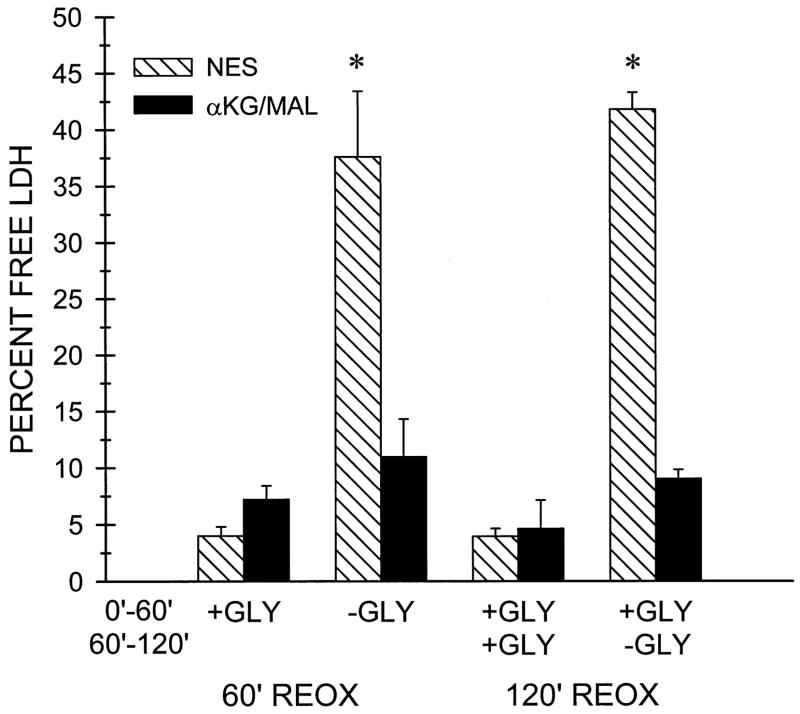Fig. 11.
Lactate dehydrogenase (LDH) release after glycine (GLY) withdrawal. Tubules were subjected to 60 min hypoxia followed by 120 min reoxygenation in the presence of either no extra substrate (NES) or with 4 mM α-KG/MAL during reoxygenation. In the indicated groups designated as -GLY for the 0–60 min and 60–120 min reoxygenation (REOX) periods, glycine was withdrawn either immediately at the start of reoxygenation or at 60 min of reoxygenation. LDH release was measured at 60 and 120 min of reoxygenation. Tubules for all groups were similarly washed and resuspended in fresh medium at both the start of reoxygenation and at 60 min of reoxygenation, so the values for LDH release shown are the amounts released during the 0–60 and 60–120 min reoxygenation periods. Data are means ± SE from four experiments. *P < 0.05 vs. corresponding α-KG/MAL group. LDH release by oxygenated control tubules that had not been subjected to hypoxia averaged 1.4 ± 0.1% during the 0 to 60-min period and 1.1 ± 0.05% during the 60- to 120-min period irrespective of the presence of glycine.

